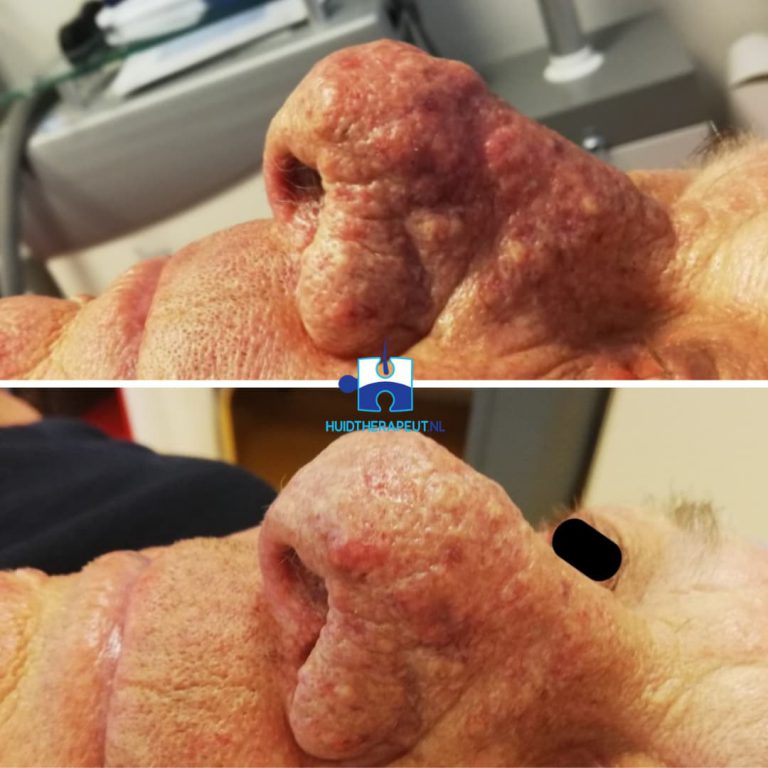What is the cause of Rosacea?
What causes rosacea is unknown. Some known factors that can aggravate rosacea are: hypersensitivity to certain creams, lotions and makeup, transition from low to high temperatures, alcohol, nutrition, heavy physical activity, emotional stress and certain medicines.
Types of Rosacea
We distinguish four different types of rosacea:
- Rosacea consisting of redness and visible vessels (Erythematous teleangiectatic rosacea). In this form, we mainly see a lot of redness that manifests itself in small vessels on the cheeks, nose and chin
- Rosacea consisting of redness with inflammation (papulopustular rosacea). In this form, we see facial redness accompanied by inflammation or closed red bumps
- Rosacea with thickenings (fibromatous rosacea / rhinophyma). In this form we mainly see redness in the face and a thickening of the nose.
- Rosacea around the eyes (ocular rosacea). With this shape, the eyes are also very red and fiery.
How can you treat Rosacea?
Redness caused by dilated arteries in the face can be treated by the skin therapist by coagulation.
Rosacea where inflammation is at the forefront can be treated by applying chemical peels to strengthen the skin barrier. Rosacea with bulges on the nose can also be treated by a combination of coagulation and chemical peels.
In addition, sun protection is very important with rosacea. The skin is often hypersensitive, causing rapid burning. This allows the rosacea to be triggered even more. It is therefore highly recommended to apply a sun protection of at least factor 30 every day.




